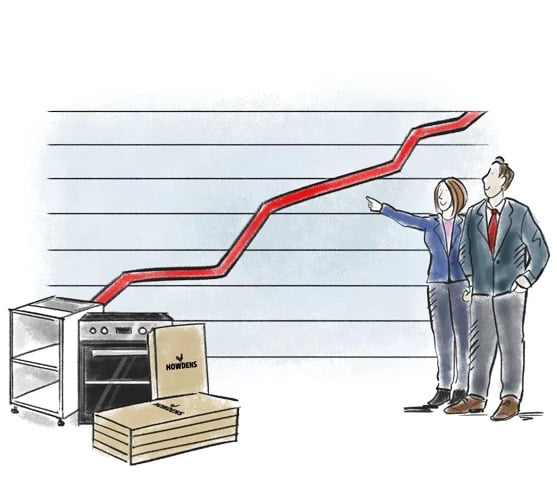Half Yearly Report for the 24 Weeks ended 13 June 2009
22 July 2009
Highlights
Howden Joinery has performed resiliently during the first half of 2009, reflecting actions taken during the course of 2008 and this year to enable the business to deal with an economic slowdown. This is despite market conditions continuing to be impacted by the downturn that occurred in 2008, most notably in October. In addition, progress continues to be made on pro-actively dealing with legacy issues.
Financial highlights
Satisfactory underlying performance on key measures:
- Howden Joinery UK depot revenue decreased by 8.3%* to £310.1m, down 9.8%* on same depot basis** (*Excluding the distorting effect of week 1 - see note 1 below; **Excluding depots opened in 2008);
- Group revenue was £316.8m (2008: £354.6m);
- Gross profit margin rose from 52.7% to 54.1%, despite impact of adverse currency movements;
- Operating profit fell to £10.0m (2008: £20.8m), reflecting lower sales partly offset by gross profit margin improvement;
- Profit before tax and exceptional items fell to £4.7m (2008: £20.1m), partly reflecting the £5.2m increase in the net finance charge in respect of pensions;
- Basic earnings per share before exceptional items from continuing operations of 0.5p (2008: 2.1p);
- Basic loss per share from continuing and discontinued operations of (0.2)p (2008: Basic earnings of 2.4p);
- Net debt fell to £50.3m at 13 June 2009 (27 December 2008: £61.2m), reflecting a £21.8m reduction in stock levels. The fall in debt was achieved despite cash payments totalling £15.4m relating to 'legacy' properties and a payment of £13.4m to the Group's pension schemes in excess of the operating charge.
Other highlights
We continue to manage 'legacy' issues pro-actively and strengthen our competitive position:
- further mitigation of legacy property liability, including termination of leases on five more guaranteed properties;
- agreement reached on funding of pension deficit for three years starting April 2009 (announced 16 July 2009);
- various new products introduced, including 'own label' Lamona appliances and nine kitchen ranges.
Note 1: Week 1 sales (2008: £5.7m, 2009 £0.8m) excluded because of the impact arising from New Year's Day falling on different days of the week (Tuesday in 2008, Thursday in 2009) which meant not only were there two fewer days trading this year, but also that there were far fewer builders returning to work that week.
CURRENT TRADING
Howden Joinery UK depot revenue fell 5.2% in the first period of the second half of the year (period 7) compared with the same period last year. The lower relative decline in sales compared to that seen in the first half of the year reflects the weaker comparators arising from the change in sales pattern that occurred in the middle of last year.
Galiform's Chief Executive, Matthew Ingle, said:
"We are encouraged by the resilient operating and financial performance of the business in a challenging environment. Sales have remained stable throughout the year and the impact on profitability of the weakness of the pound has been more than offset by actions we have taken to protect our gross profit margin. The fall in net debt we have seen since the start of the year reflects our continuing focus on all aspects of cash flow management.
"In addition, we continue to make progress on dealing with legacy issues, including reducing our guaranteed properties liability. We remain confident of the strength and potential of the Howdens business model and, in time, plan to resume depot openings."
Enquiries
| Enquiries | ||
| Investors/analysts: | Media: | |
| Gary Rawlinson | Brunswick: | Kate Holgate |
| Head of Investor Relations | Annabel Entress | |
|
+44 (0)207 404 5959 (22 July 2009 only) |
+44 (0)207 404 5959 | |
| +44 (0)207 535 1127 | ||
| +44 (0)7989 397527 | ||
SUMMARY OF GROUP RESULTS
The information presented below relates to the 24 weeks to 13 June 2009 and the 24 weeks to 14 June 2008, unless otherwise stated.
|
£m unless stated |
2009 | 2008 |
|
Continuing operations before exceptional items: |
||
|
|
||
|
Revenue |
316.8 | 354.6 |
|
- Howden Joinery UK depots |
310.1 | 342.6 |
|
Gross profit |
171.3 | 186.8 |
|
Gross profit margin, % |
54.1 | 52.7 |
|
Operating profit |
10.0 | 20.8 |
|
Profit before tax |
||
|
- excluding exceptional items |
4.7 | 20.1 |
|
- including exceptional items1 |
4.7 | 21.6 |
|
|
||
|
Loss from discontinued operations before tax |
||
|
- including exceptional items1 |
(4.4) | - |
|
|
||
|
Earnings per share from continuing operations |
||
|
- basic excluding exceptional items |
0.5p | 2.1p |
|
- basic including exceptional items |
0.5p | 2.4p |
|
|
||
|
Earnings/(loss) per share from continuing and discontinued operations |
||
|
- basic excluding exceptional items |
0.5p | 2.1p |
|
- basic including exceptional items |
(0.2)p | 2.4p |
|
|
||
|
Net debt at end of period |
50.3 | 40.9 |
1 Details of exceptional items are given in note 7 to the Condensed Financial Statements.
FINANCIAL REVIEW
The following discussion relates to the 24 weeks to 13 June 2009 and the 24 weeks to 14 June 2008, unless otherwise stated.
FINANCIAL RESULTS FOR FIRST HALF OF 2009
The financial performance of the Group during the first half of 2009 benefited from the strength of the Group's competitive position and the characteristics of the end-users of its products. This includes significant exposure to the tenanted housing sector, both public and private, which is subject to different economic drivers than the owner-occupied sector, and very limited exposure to the new housing market. Performance also benefited from actions taken during the course of 2008 and this year to enable the business to cope with weaker economic and market conditions, including rationalising depot operations and pursuing opportunities to improve gross profit.
Sales through our Howden Joinery UK depots decreased by £32.5m to £310.1m in 2009, Group revenue falling slightly more as a result of the ending of supply to Hygena Cuisines early this year.
| Revenue £m | 2009 | 2008 |
| Group | 316.8 | 354.6 |
| comprising: Howden Joinery UK depots Howden Joinery French depots Hygena Cuisines*
* now terminated |
310.1 5.5 1.1 |
342.6 5.0 7.1 |
Excluding the distorting effect of trading in the first week of the year (see note 1 at end of Highlights section above), Howden Joinery UK depots' revenue was down 8.3%, declining 9.8% on a same depot basis (excludes depots opened in 2008). Trading conditions were stable throughout the first half of the year, remaining on a par with that seen in the last three periods of 2008.
Sales by our French depots of £5.5m were down slightly in constant currency terms.
Gross profit fell by £15.5m to £171.3m. The impact of lower underlying sales volumes was exacerbated by the £7.0m adverse effect of the deterioration in the exchange rate on the cost of goods purchased from overseas suppliers. However, the impact of the weaker exchange rates was more than offset by an increased focus in our depots on gross profit margin and the benefit from a small price increase early in the year. In addition, gross profit benefited from purchasing and manufacturing efficiencies.
Although gross profit fell, the gross profit margin rose from 52.7% in 2008 to 54.1%.
Selling and distribution costs and administrative expenses fell by £4.8m to £161.3m.
Within this, operating costs of Howden Joinery UK depots opened before 2008 fell as a result of changes to resource levels made in the middle of last year. In addition, logistics (warehouse and transport) costs were reduced. These savings were partly offset by the impact of inflation on certain other costs and the costs of depots opened in 2008 (no depots have been opened in 2009). In addition, we have increased the provision for bad debt, reflecting delays in our ability to recover debt through the judicial system and the consequent increase in the ageing of the debtor book. Whilst the provision has been increased, this issue has not led to an increase in the occurrence of debt write-offs at this stage.
Operating profit before exceptional items was £10.0m (2008: £20.8m).
The net interest charge rose by £4.6m to £5.3m, mainly due to the £3.7m finance expense in respect of pensions (2008: £1.5m income). The net result was profit before tax and exceptional items from continuing operations of £4.7m (2008: £20.1m).
There was an exceptional charge before tax of £4.4m in respect of discontinued operations. This related to the rent and other obligations payable on nine properties which had been occupied by Sofa Workshop prior to it going into administration earlier this year. Cash expenditure incurred in the first half of this year in respect of these properties was £0.4m.
The tax charge on profit before tax was £1.7m, based on the estimated effective rate of tax on profit before tax for the 2009 financial year of 35.6%. This tax rate mainly reflects the proportionate increase in the impact of depreciation on capital expenditure that is disallowable for tax purposes.
Basic earnings per share excluding exceptional items was 0.5p (2008: 2.1p) and including exceptional items was a loss of (0.2)p (2008: 2.4p earnings).
Net cash inflows from operating activities were £13.5m. Within this, working capital changes generated a cash inflow of £7.4m. This was after payments relating to 'legacy' properties (including Sofa Workshop – see above) totalling £15.4m, including rent & rates and payments in respect of early termination of leases. Stock levels at the end of the period were £21.8m lower than at the beginning of the year, having been reduced to bring them into line with current trading levels. Trade creditors and debtors at the end of the period were little changed from the start of the year.
Also included within net cash flows from operating activities was a cash contribution to the Group's pension schemes, in excess of the operating charge, of £13.4m.
Payments to acquire fixed and intangible assets totalled £3.8m (2008: £10.0m).
As a result of the above, net debt fell by £10.9m in the first half of 2009, resulting in Group net borrowings of £50.3m at 13 June 2009. At the same date, in respect of the Group's £175m bank facility (see note 23 of 2008 Annual Report and Accounts), the Group had available £75.7m of undrawn committed borrowing facilities (£77.3m at 27 December 2008).
At 13 June 2009, the pension deficit shown on the balance sheet was £131.2m (27 December 2008: £122.2m). The increase in the deficit was driven by changes in certain assumptions used to calculate liabilities, principally an increase in inflation expectations. This has been partially offset by the impact of a higher discount rate and the Company's contribution (£13.4m) made as part of the 2006 agreement to clear the actuarial deficit (over a 10-year period).
Details of the 2009 funding agreement covering the three-year period commencing April 2009, that was announced on 16 July 2009, are given below.
OPERATIONAL REVIEW
The overriding strategic goal of Galiform was first set out in the original Howden Joinery business plan and remains unaltered. It is "To supply from local stock nationwide the small builder's routine kitchen and joinery requirements, assuring no call back quality and best local price".
Against the background of a continuing weakness in consumer confidence and concerns about economic prospects, the Group continues to focus on opportunities to grow sales through improving its products and service, and increasing awareness of Howdens. We continue to work to increase profitability through greater efficiencies and prudently manage cash flow.
In pursuing these goals, numerous actions have been taken, the most significant of which are as follows.
Product
We continue to review arrangements with suppliers, re-sourcing where appropriate, the benefits from which have helped offset cost pressures within our supply chain.
Investment in product development remains key to our continued success. We have introduced the new 'Lamona' brand name for our 'own label' appliances, which brings a number of competitive advantages. So far this year, we have also introduced nine new kitchens as well as various new items in our other product ranges.
Runcorn
New IT systems for manufacturing and warehouse management have been successfully implemented in our operations in Runcorn, where we manufacture some 3.5m kitchen cabinets each year. These facilitate improved production planning and stock control.
GROUP DEVELOPMENTS
Guaranteed and other legacy properties
The Group continues to manage proactively its 'legacy property' portfolio.
Since the end of the first half of the year, agreement has been reached with the landlords of five more properties that will further reduce Galiform's financial exposure to properties that had until November 2008 been occupied by MFI Retail operations (the 'guaranteed' properties). In return for being released from all obligations in respect of the leases, Galiform has made a cash payment to the landlords totalling £6.0m, which is equivalent to around twice the average net annual costs of the leases, the average remaining period of the leases being in excess of seven years. This payment mitigates total future costs of almost £22m at current rates. This cash outflow will be included in the results for the second half of the year and was in line with the amount provided.
Excluding a property that reaches the end of its lease period in September, this means that there are now 32 outstanding guaranteed properties. The profile of properties remaining and the net annual rent and rates (current values) for the associated leases, before any mitigating action is taken, is shown below, along with the situation when this liability crystallised last September.
| As at 30 Sept | As at 1 Jan | 1 Jan | 1 Jan | 1 Jan | ||
| 2008 | Current | 2012 | 2015 | 2020 | 2025 | |
| Number of properties | 46 | 32 | 29 | 15 | 10 | - |
| Net annual rent and rates, £m | 21.4 | 15.7 | 14.7 | 7.5 | 4.6 | - |
The future costs associated with these properties have been provided for in the £108.8m exceptional charge incurred in 2008.
In respect of retail properties that were excluded from the sale of MFI in 2006, one that was previously vacant has now been sub-let. In addition, one that was previously vacant has been taken back by the landlord and one of the previously sub-let properties has been assigned to a new tenant, removing any further liability for Galiform in both cases.
Pensions
As announced on 16 July 2009, the triennial actuarial review of the pension schemes as at April 2008 has been completed and deficit funding contributions for the three years commencing April 2009 have been agreed with the schemes' trustees.
Under the agreement, Galiform's contributions to the pension deficit will be as follows:
| Year ending 5 April | 2010 | 2011 | 2012 |
| £19m | £28m | £33m |
An element of each of the annual contributions is, however, contingent on the attainment of an agreed level of performance of the Group in the financial year that ends during the relevant pension year. The contingent payments are:
| Year ending 5 April | 2010 | 2011 | 2012 |
| £5m | £8m | £8m |
If payable, these contingent payments will be made shortly after the relevant audited accounts have been signed. All other amounts are payable in equal monthly instalments during the relevant pension year.
The agreement will result in an expected cash contribution to the pension deficit in the current financial year (ending 26 December 2009) of £21m. This includes payments in respect of the previous agreement with the trustees, reached in 2006.
OUTLOOK
Should economic and market conditions continue to remain stable, we would expect the reported sales performance of Howden Joinery UK depots in the second half of 2009 relative to last year to improve compared with the performance seen in the first half of the year. This would reflect the slowdown of sales growth seen in mid-2008 and the sharp decline seen from October 2008.
We are not expecting the economic environment to improve markedly in the short term and will continue to manage the business in light of prevailing conditions. However, if our current performance is sustained during the coming months and we have a successful Period 11 in October, we will consider opening a small number of depots later this year.
The key risk to performance in the second half of the year is the continuing uncertainty surrounding the general economic environment, in particular, the impact of rising unemployment and the effect this could have on trading. Other risks to the business are discussed in the following section on 'Risks and Uncertainties'.
GOING CONCERN AND RISKS AND UNCERTAINTIES
GOING CONCERN
The Group meets its day to day working capital requirements through an asset backed lending facility of £175m, which is not due for renewal until May 2011. The current economic conditions create uncertainty, particularly over (a) the level of demand for the Group's products and, (b) the exchange rate between sterling and both the Euro and the US Dollar which would affect the cost of the Group's operations.
The Group's forecasts and projections have been stress-tested for reasonably possible adverse variations in trading performance. The results of this testing shows that the Group should be able to operate within the level of its current committed facility and covenants. The Group's banking facility expires in May 2011 so at this stage the Group has not sought any written commitment that the facility will be renewed. We will open renewal negotiations with the banks in due course.
After making enquiries, the directors have a reasonable expectation that the Company and the Group have adequate resources to continue in operational existence for the foreseeable future. Accordingly, they continue to adopt the going concern basis in preparing the half-yearly condensed financial statements.
RISKS AND UNCERTAINTIES
The Board continually assesses and monitors the key risks of the business. The principal risks and uncertainties that could have a material impact on the Group's performance over the remaining 28 weeks of the financial year have not changed from those which are set out in detail on pages 14 to 17 of the Group's 2008 Annual Report, and which are summarised below:
- Market conditions
- Continuity of supply
- Product design leadership
- Failure to implement the Howdens' strategy
- Loss of key personnel
- IT systems
- Defined benefit pension scheme
- Disposal of MFI property leases
A copy of the Group's 2008 Annual Report is available on the Group's website, www.galiform.com.
Condensed Consolidated Income Statement
| 24 weeks to 13 June 2009 unaudited |
24 weeks to 14 June 2008 unaudited |
52 weeks to 27 December 2008 audited |
||||||||
| Notes | Before exceptional items £m |
Exceptional items £m |
Total £m |
Before exceptional items £m |
Exceptional items £m |
Total £m |
Before exceptional items £m |
Exceptional items £m |
Total £m |
|
| Continuing operations: |
|
|
|
|||||||
| Revenue | 316.8 | - | 316.8 | 354.6 | - | 354.6 | 805.7 | - | 805.7 | |
| Cost of sales | (145.5) | - | (145.5) | (167.8) | - | (167.8) | (378.2) | 1.0 | (377.2) | |
| Gross profit | 171.3 | - | 171.3 | 186.8 | - | 186.8 | 427.5 | 1.0 | 428.5 | |
| Selling & distribution costs | (131.7) | - | (131.7) | (139.8) | - | (139.8) | (298.3) | 1.5 | (296.8) | |
| Administrative expenses | (29.6) | - | (29.6) | (26.3) | - | (26.3) | (53.4) | 0.4 | (53.0) | |
| Other operating income | 7 | - | - | - | - | 1.5 | 1.5 | - | 1.9 | 1.9 |
| Share of joint venture profit | - | - | - | 0.1 | - | 0.1 | 0.1 | - | 0.1 | |
| Operating profit | 10.0 | - | 10.0 | 20.8 | 1.5 | 22.3 | 75.9 | 4.8 | 80.7 | |
| Finance income | 8 | 0.1 | - | 0.1 | 0.3 | - | 0.3 | 1.4 | - | 1.4 |
| Finance expense | 8 | (1.7) | - | (1.7) | (2.5) | - | (2.5) | (6.3) | - | (6.3) |
| Other finance (expense)/income - pensions | 8 | (3.7) | - | (3.7) | 1.5 | - | 1.5 | 3.3 | - | 3.3 |
|
Profit before tax from continuing operations |
4.7 | - | 4.7 | 20.1 | 1.5 | 21.6 | 74.3 | 4.8 | 79.1 | |
|
Tax charge for the period from continuing operations |
9 | (1.7) | - | (1.7) | (7.5) | - | (7.5) | (23.3) | (0.8) | (24.1) |
| Profit after tax from continuing operations | 3.0 | - | 3.0 | 12.6 | 1.5 | 14.1 | 51. 0 | 4.0 | 55.0 | |
| Discontinued operations: | ||||||||||
| Loss before tax from discontinued operations | 7 | - | (4.4) | (4.4) | - | - | - | - | (108.8) | (108.8) |
| Tax on loss from discontinued operations | 7 | - | - | - | - | - | - | - | 2.6 | 2.6 |
| Loss after tax from discontinued operations | - | (4.4) | (4.4) | - | - | - | - | (106.2) | (106.2) | |
| Profit/(loss) for the period attributable to the equity holders of the parent | 3.0 | (4.4) | (1.4) | 12.6 | 1.5 | 14.1 | 51. 0 | (102.2) | (51.2) | |
| Earnings per share: | pence | pence | pence | |||||||
| From continuing operations | ||||||||||
| Basic earnings per 10p share | 10 | 0.5 | 2.4 | 9.2 | ||||||
| Diluted earnings per 10p share | 10 | 0.5 | 2.3 | 9.0 | ||||||
| From continuing and discontinued operations | ||||||||||
| Basic (loss)/earnings per 10p share | 10 | (0.2) | 2.4 | (8.6) | ||||||
| Diluted (loss)/earnings per 10p share | 10 | (0.2) | 2.3 | (8.4) | ||||||
Exceptional items are analysed in note 7.
Condensed consolidated balance sheet
| Notes | As at 13 June 2009 unaudited £m |
As at 14 June 2008 unaudited £m |
As at 27 December 2008 audited £m |
|
| Non current assets | ||||
| Goodwill | 2.5 | 2.5 | 2.5 | |
| Other intangible assets | 5.8 | 6.6 | 6.2 | |
| Property, plant and equipment | 11 | 85.2 | 90.5 | 89.4 |
| Investments | 12 | 2.0 | 8.0 | 4.0 |
| Deferred tax asset | 56.9 | 55.5 | 52.6 | |
| 152.4 | 163.1 | 154.7 | ||
| Current assets | ||||
| Inventories | 99.5 | 116.2 | 121.3 | |
| Trade and other receivables | 100.1 | 116.1 | 99.2 | |
| Other assets | 1.0 | 2.1 | 1.3 | |
| Cash at bank and in hand | 18.4 | 27.3 | 21.2 | |
| 219.0 | 261.7 | 243.0 | ||
| Total assets classified as held for sale | - | 1.3 | 1.0 | |
| Total assets | 371.4 | 426.1 | 398.7 | |
| Current liabilities | ||||
| Trade and other payables | (122.4) | (174.8) | (120.4) | |
| Current tax liability | (5.7) | (8.6) | (4.9) | |
| Current borrowings | (2.6) | (3.0) | (3.4) | |
| (130.7) | (186.4) | (128.7) | ||
| Non current liabilities | ||||
| Non-current borrowings | (67.1) | (67.3) | (80.3) | |
| Pension liability | 17 | (131.2) | (112.0) | (122.2) |
| Deferred tax liability | (5.5) | (2.9) | (5.5) | |
| Provisions | 15 | (107.5) | (36.6) | (119.8) |
| (311.3) | (218.8) | (327.8) | ||
| Total liabilities | (442.0) | (405.2) | (456.5) | |
| Net (liabilities)/assets | (70.6) | 20.9 | (57.8) | |
| Equity | ||||
| Called up share capital | 13 | 63.4 | 63.4 | 63.4 |
| Share premium account | 13 | 85.1 | 85.1 | 85.1 |
| ESOP reserve | 13 | (25.3) | (29.0) | (27.1) |
| Other reserves | 13 | 28.1 | 28.1 | 28.1 |
| Retained loss | 13 | (221.9) | (126.7) | (207.3) |
| Total (deficit)/equity | (70.6) | 20.9 | (57.8) |
Condensed consolidated cash flow statement
| Notes | 24 weeks to 13 June 2009 unaudited £m |
24 weeks to 14 June 2008 unaudited £m |
52 weeks to 27 December 2008 audited £m |
|
| Net cash flows from operating activities | 14 | 13.5 | (26.9) | (37.8) |
| Cash flows from investing activities | ||||
| Interest received | 0.1 | 0.3 | 1.5 | |
| Cash flow from acquisitions | - | 3.2 | 3.2 | |
| Redemption of investment | 2.0 | - | 4.0 | |
| Payments to acquire property, plant and equipment and intangible assets | (3.8) | (10.0) | (19.4) | |
| Receipts from sale of property, plant and equipment and intangible assets | 1.0 | 3.5 | 3.5 | |
| Net cash used in investing activities | (0.7) | (3.0) | (7.2) | |
| Cash flows from financing activities | ||||
| Interest paid | (1.9) | (4.8) | (8.5) | |
| Receipts from issue of own share capital | - | 0.1 | 0.1 | |
| (Decrease)/increase in loans | (13.2) | 31.5 | 44.1 | |
| Repayment of capital element of finance leases | (0.8) | (0.5) | (1.2) | |
| Decrease in other assets | 0.3 | 0.3 | 1.1 | |
| Dividends paid to Group shareholders | - | (3.0) | (3.0) | |
| Net cash (used in)/from financing activities | (15.6) | 23.6 | 32.6 | |
| Net decrease in cash and cash equivalents | (2.8) | (6.3) | (12.4) | |
| Cash and cash equivalents at beginning of period | 14 | 21.2 | 33.6 | 33.6 |
| Cash and cash equivalents at end of period | 14 | 18.4 | 27.3 | 21.2 |
For the purpose of the cash flow statement, cash and cash equivalents are included net of overdrafts payable on demand. These overdrafts are excluded from the definition of cash and cash equivalents disclosed on the balance sheet.
Cash flows from discontinued operating activities are shown in note 14. There are no cash flows from discontinued investing or financing activities.
Condensed consolidated statement of recognised income and expense
| Notes | 24 weeks to 13 June 2009 unaudited £m |
24 weeks to 14 June 2008 unaudited £m |
52 weeks to 27 December 2008 audited £m |
|
| Actuarial loss on defined benefit pension schemes | 17 | (18.7) | (43.3) | (66.3) |
| Deferred tax on actuarial loss on defined benefit pension schemes | 5.3 | 12.1 | 18.6 | |
| Deferred tax on share schemes | 0.1 | - | - | |
| Currency translation differences | 0.1 | 0.2 | 1.4 | |
| Net loss recognised directly in equity | (13.2) | (31.0) | (46.3) | |
| (Loss)/profit for the financial period | (1.4) | 14.1 | (51.2) | |
| Total recognised income and expense for the period, attributable to the equity shareholders of the parent | (14.6) | (16.9) | (97.5) |
HOWDENS Making space more valuable
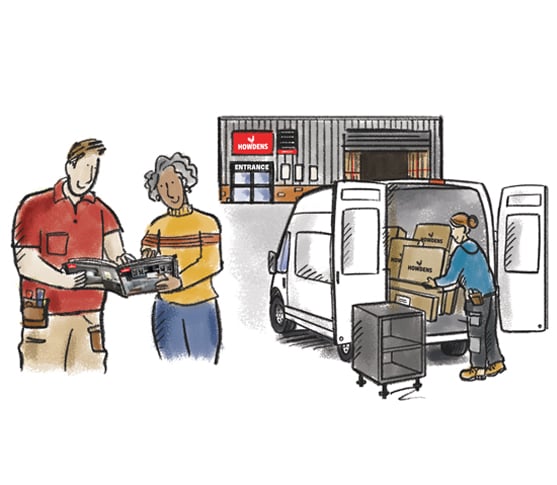
Business Model and Strategy
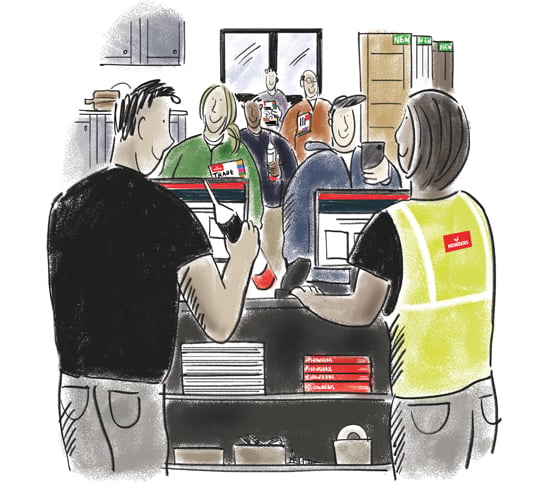
Depots
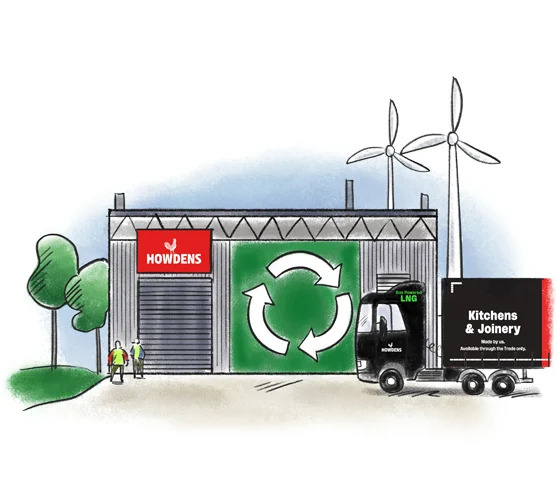
Sustainability
Community
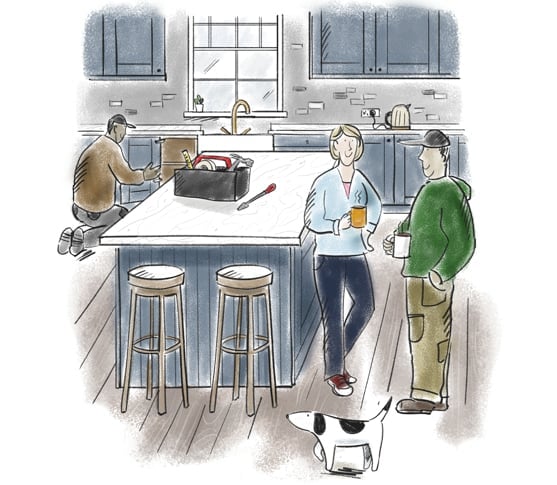
Products
People and Careers
